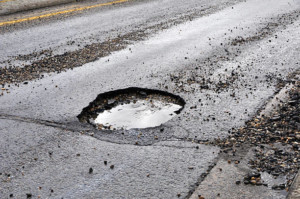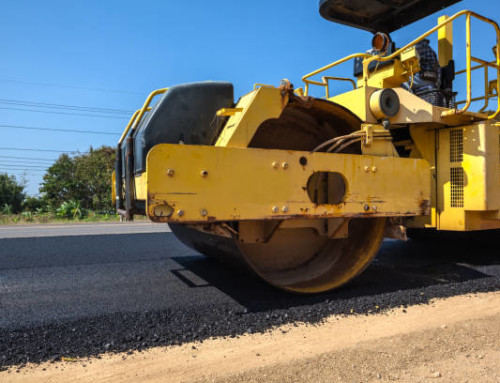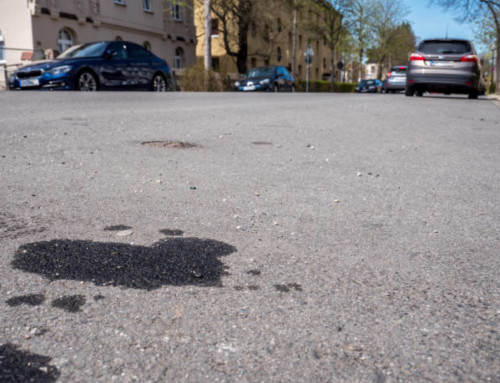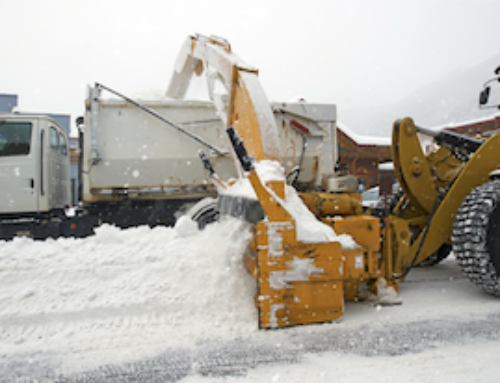
What causes potholes? The short answer is distressed pavement, which occurs from aging asphalt, ongoing traffic, weather, and lack of maintenance. As cars and trucks pass over a weather-weakened or aging spot in the road, pieces of that road surface will break down, causing cracks and gaps. Without proper maintenance, even small cracks can become potholes, and small potholes turn into large craters.
Of course, potholes may be prevented in the first place by properly sealing cracks and performing other regular maintenance. It’s important to perform regular maintenance instead of correcting major issues and reconstructing road surfaces.
To prevent potholes from forming, sealing cracks is an important step. By keeping water out of pavement by sealing, many potholes will never form. In fact, along with making sure road surfaces have adequate drainage, sealing cracks is the most important maintenance technique to avoid or greatly delay pavement distress caused by weather and wear.
How Potholes Form from Cracks
Potholes begin to form after rain or snow creeps into the surface of a road through a pavement crack and flows under that road surface. The moisture can freeze when the temperature drops, making the ground expand, and causing the road surface to then push up. When salt is used on icy roads, the problem can be increased.
When the temperature rises again, the ground itself may return to its normal level, but the pavement surface stays elevated, creating a gap between the pavement and ground.
Whenever vehicles drive over that gap, the surface will crack more and slip into the gap, causing a pothole to form.
If the pothole fills with water once again, and refreezes, more asphalt can break and cause the pothole to become much larger. Because winter weather is a big cause of potholes, the real damage to roads is often most noticeable in the spring.
But, if the weather remains temperate, what causes potholes? These damaging craters can still form due to aging roads, heavy traffic, large stress loads, and excessive rain or flooding.
Filling and Sealing Cracks to Avoid Pothole Damage
Filling and sealing cracks to avoid the formation of potholes and greater road damage is key. At TopWest Asphalt, we can fill and seal cracks effectively to protect asphalt from further damage, reduce the chance for full surface replacement, and prevent the traffic dangers that can be caused by disintegrating asphalt.
During warm weather, we can patch using a hot asphalt mix that hardens as it cools, providing a tight seal. In cold weather, an emergency cold patch is applied, and can be re-patched using a hot mix when weather warms again.
Crack sealing prevents water intrusion through the crack into the pavement structure below. Sealing involves the use of a hot sealant when weather allows.
TopWest Patching Services
At TopWest we can provide three different types of patching.
Asphalt Dig Out –
This type of long-lasting patching removes failed asphalt sections to the base, installing a new one from the ground up.
Surface patching –
Also called mill patching and used for moderate damage, this process mills pavement surface to remove a few top inches, cleaning the area, then pouring in, compacting, and leveling new asphalt.
Pothole patching –
Filling in the pothole or hairline cracks in the surface of the road.
How TopWest Asphalt Can Help
We’ve provided quality asphalt services for over 15 years, offering detailed craftsmanship that’s designed to last, as well as ongoing maintenance to keep your asphalt looking good and pothole free.
Give us a call today, at (604) 857-3126 for a free estimate or to schedule service. We’ll look forward to hearing from you and helping with all your asphalt needs throughout the greater Abbotsford area.



